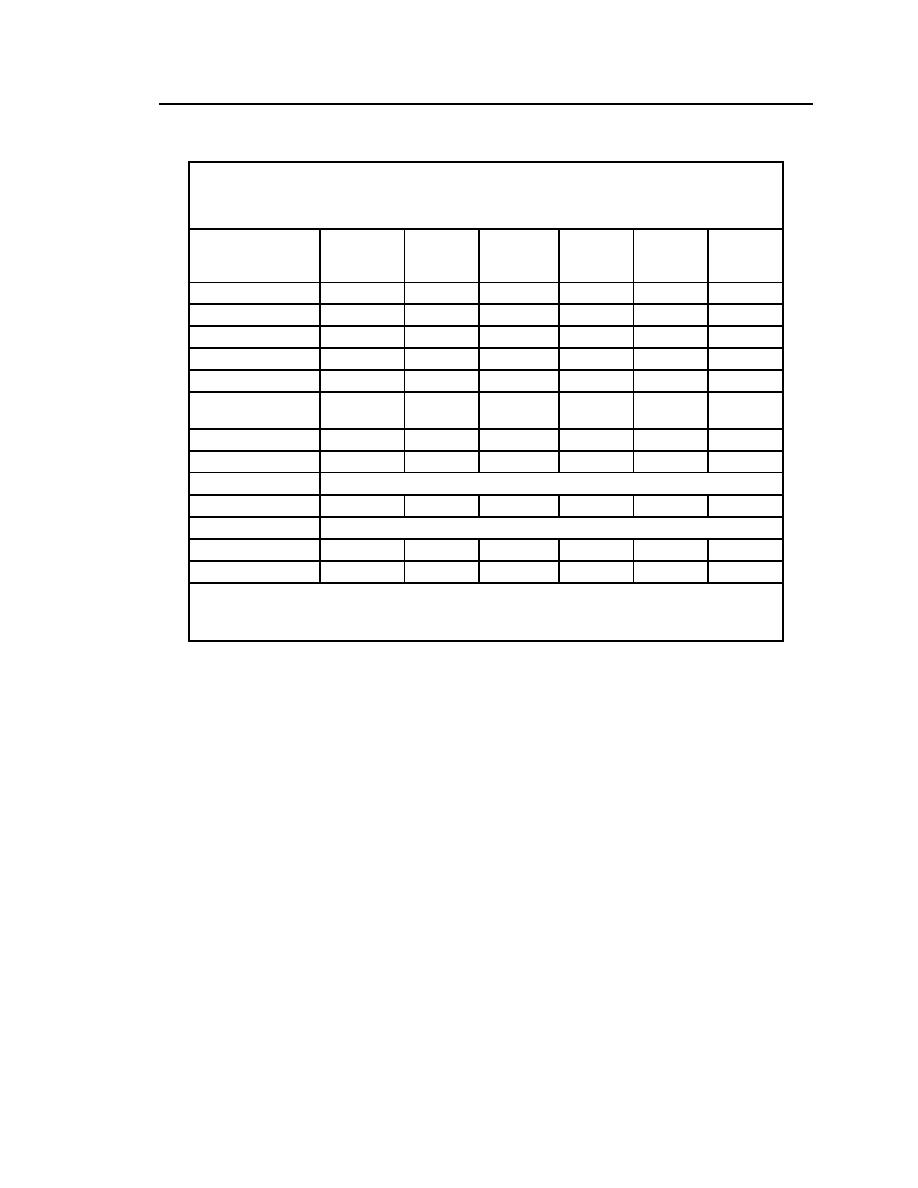
Army Aircraft Icing
35
Table 12. Commanders' ratings (by location) of potential impact on mission of an
aircraft deicing technique that allows aircraft to be flight-ready in less than 30
minutes.
% of
No. of
moderate
% of high
% of low
moderate No. of high
No. of low
ratings
ratings
ratings
ratings
Location
ratings
ratings
Belgium
1
0
100
0
0
0
Germany
3
4
21
29
50
7
Korea*
2
0
29
0
71
5
Fort Drum, NY
0
0
0
0
100
3
Fort Campbell, KY
1
0
25
0
75
3
Fort Wainwright,
AK
--
--
--
--
--
--
Fort Belvoir, VA
0
0
0
0
100
1
Fort Eustis, VA
1
0
100
0
0
0
USAR
Fort Sheridan, IL
1
1
50
50
0
0
National Guard
Indiana
0
0
0
0
100
1
Minnesota
0
1
0
100
0
0
* Two returned questionnaires from HQ, 17th Aviation Brigade, Seoul, Korea.
Note: The number of reports per month per location corresponds to the number of commanders'
questionnaires returned from each location.
2. Environment-friendly deicing fluid that is compatible with the entire
aircraft.
The primary method of deicing civil and military fixed-wing aircraft before
flight is to spray them with heated ethylene or propylene glycol. Though heli-
copters are occasionally deiced with glycol, the practice is not recommended
because glycol emulsifies greases, and thus washes lubricant from rotorhead
bearings, causing corrosion and failure. In addition, glycol may damage some
materials, and the odor has been reported to make soldiers sick. Ethylene glycol
is toxic and must be recovered before entering the environment. Propylene glycol
is not toxic, but does harm surface waters because it has a high biological oxygen
demand that causes eutrophication of surface waters. Glycol recovery systems are
economically viable only at airfields that use thousands of gallons per day. Mili-
tary airfields do not consume large quantities of glycol because there are typi-
cally few flights. Since recovery systems are not economically viable, environ-
mentally acceptable deicing fluids are needed for military applications. Army



 Previous Page
Previous Page
